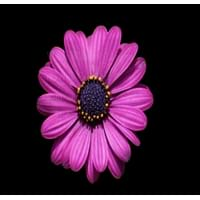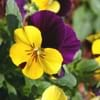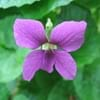Color
Orange, Purple, Red, White, Yellow
Orange, Pink, Purple, Red, White, Yellow
Color Meaning
Orange - Satisfaction and Passion, Pink - Sensitivity and Love, Purple - Elegance and Pride, Red - Courage, Desire and Love, White - Purity and Innocence, Yellow - Happiness and Friendship
Orange - Satisfaction and Passion, Pink - Sensitivity and Love, Purple - Elegance and Pride, Red - Courage, Desire and Love, White - Purity and Innocence, Yellow - Happiness and Friendship
Line
Not Available
Not Available
Silhouette
Not Available
Not Available
Blossom Texture
Not Available
Not Available
Form
Not Available
Not Available
Sunlight
Full Sun
Full Sun
Watering
Diligently
Enough
Essential Fertilizers
Lime stone, Sulphur
Ammonium
Common Pests and Diseases
List of Pests
Aphids, Japanese beetles
Aphids, Nematodes, Whiteflies
List of Diseases
Black Spot, Powdery Mildew
Alternia Leaf Spot, Bacterial leaf spot or blast, blight, Powdery Mildew, Root Rot, Stem Rot
Bloom Time
All Summer Season, Fall Season, Spring Season
All Summer Season, Fall Season, Spring Season
Origin
Africa, Asia, Europe, North America
Africa, Asia, South America
Interesting Facts of
- The Rose comes in various colors, although a "black rose " is not literally black but a dark red.
- A single rose suggests utmost devotion while two rose entwined together says "Marry me".
- Gerbera flowers have a long vase life.
- Gerbera flowers are named after a botonist and physician Trauggott Gerber.
- They are fifth most popular flowers in the world after rose, carnation, chrysanthemum and tulip.
Lifespan
Perennials - a plant that lives for three or more years
Perennials - a plant that lives for three or more years
Habit
Shrubs
Herbs, Shrubs
Uses
Not Available
Not Available
Health Benefits
Best remedy for Cough & Cold, Good remedy for Diarrhea, Prevents Intestinal Ulcers, Reduces Haemorrhages, Treats Rickets
Best remedy for Cough & Cold, Reduces risk of cancer, Treats rheumatism
Medicinal Uses
Acts as an anti-inflammatory, Rejuvenates body and skin
Acts as a antispasmodic, Treats mouth sores
Culinary Uses
Rich in Vitamins, Used in jam, jelly, marmalade
NA
Cosmetic Uses
Best for Healing, Lightens the skin, Used in Perfumes
Used in nail paints and lipstick shades, Used in Perfumes
Occasional Uses
Anniversary, Birth Day, Christmas, Congratulations, Father's Day, Friendship Day, Funerals, Mother's Day, Sympathy, Thank You, Valentine's Day, Wedding
Anniversary, Birth Day, Friendship Day, Wedding
Allergy
Asthma, Conjunctivitis, Itching, Red eyes, Runny nose, Sneezing
Asthma, Contact Dermatitis, Hayfever
Scientific Name
Rosa
Gerbera Jamesonii
Sub kingdom
Tracheobionta
Tracheobionta
Super Division
Spermatophyta
Spermatophyte
Division
Magnoliophyta
Magnoliophyta
Class
Magnoliopsida
Magnoliopsida
Family
Rosaceae
Asteraceae
Sub Family
Rosoideae
Mutisioideae
Genus
Not Available
Not Available
Number of Species
Not Available
Not Available
More about Rose and Gerbera Facts and color
You must be curious to know more about Rose and Gerbera facts and color. flowers.comparespecies.com will let you know all the Interesting Facts about Rose and Gerbera. Rose comes in Orange, Purple, Red, White, Yellow colors whereas Gerbera flowers are with Orange, Pink, Purple, Red, White, Yellow colors. Other Rose and Gerbera facts will definitely amuse you.
Rose and Gerbera growing conditions
Absolute growing condition is the only key to keep plants in good health and in good shape. Let’s learn about essential Rose and Gerbera growing conditions. Rose requires Full Sun and Diligently watering with 6.50 of Loamy soil. Gerbera needs Full Sun and Enough watering with 5.50 of Sandy soil. Get other Rose and Gerbera facts in the sections below.





